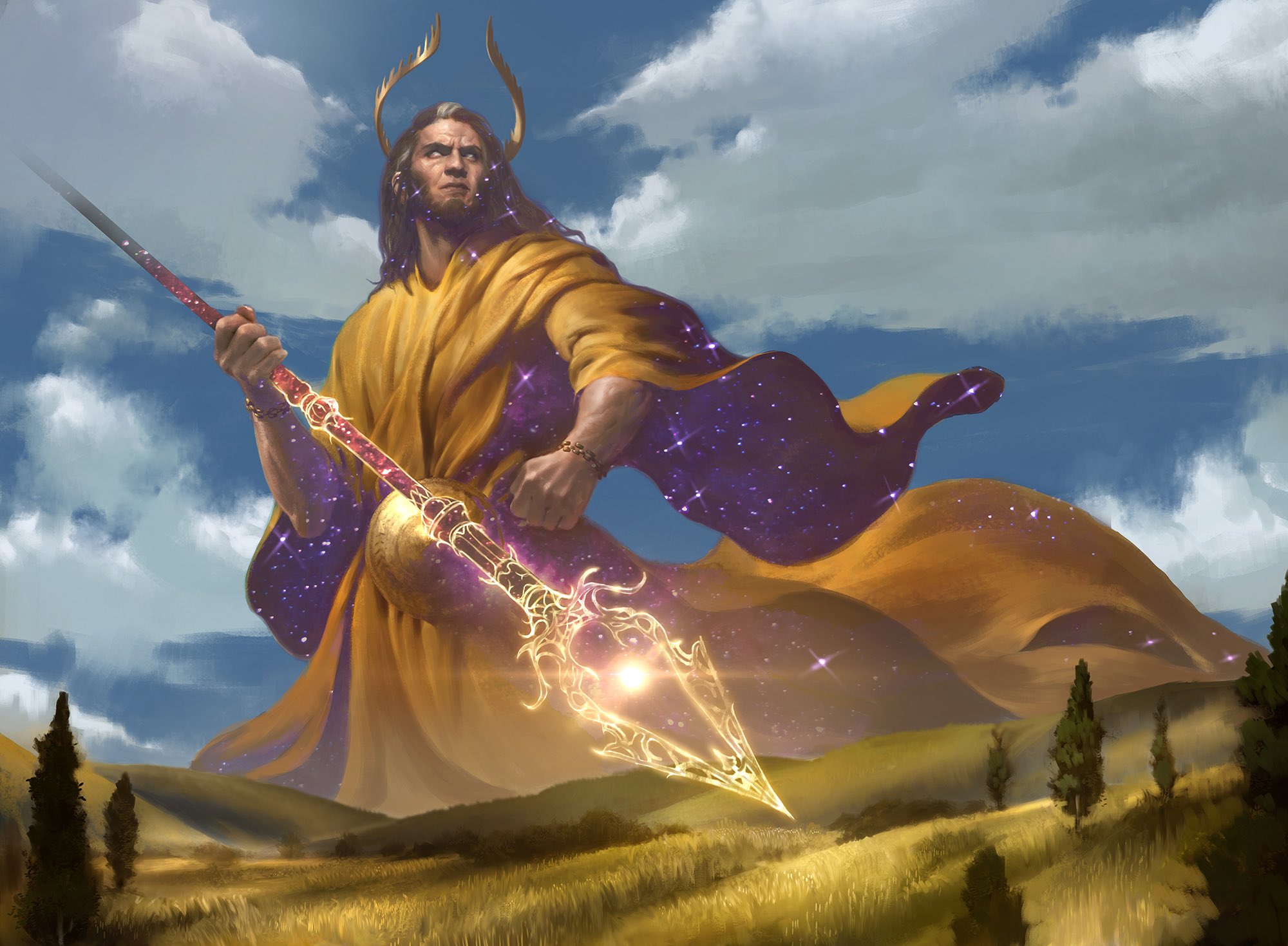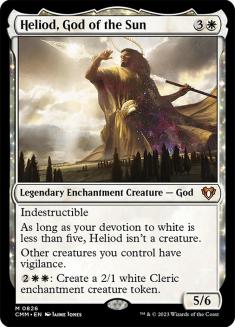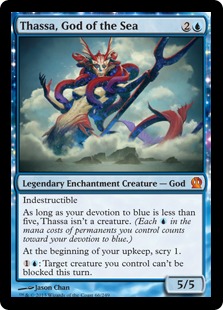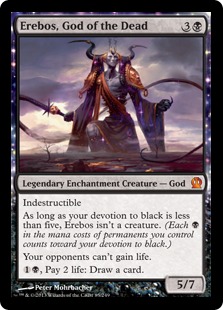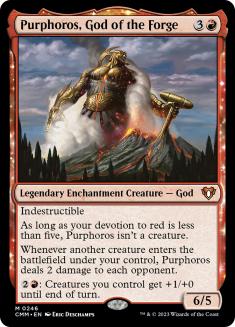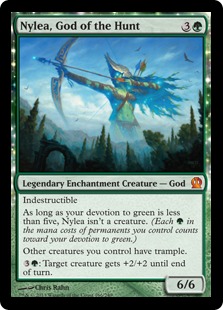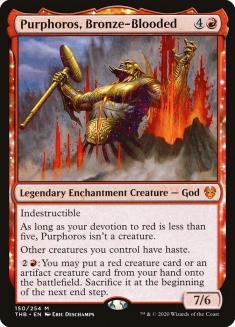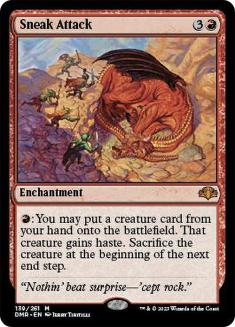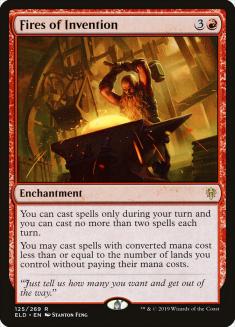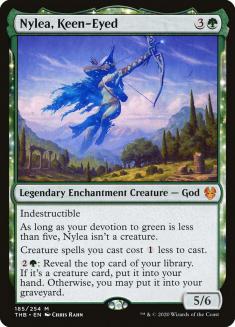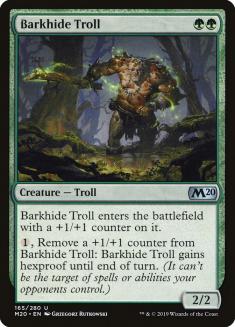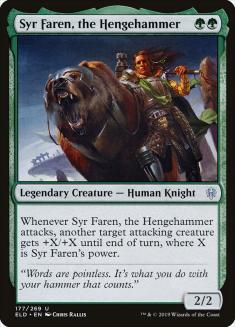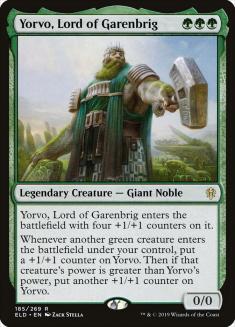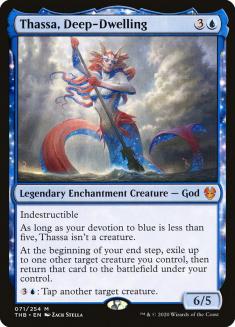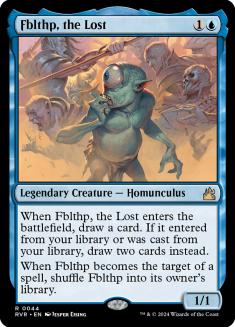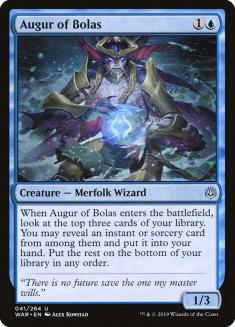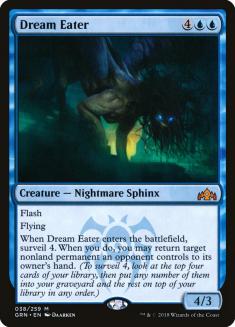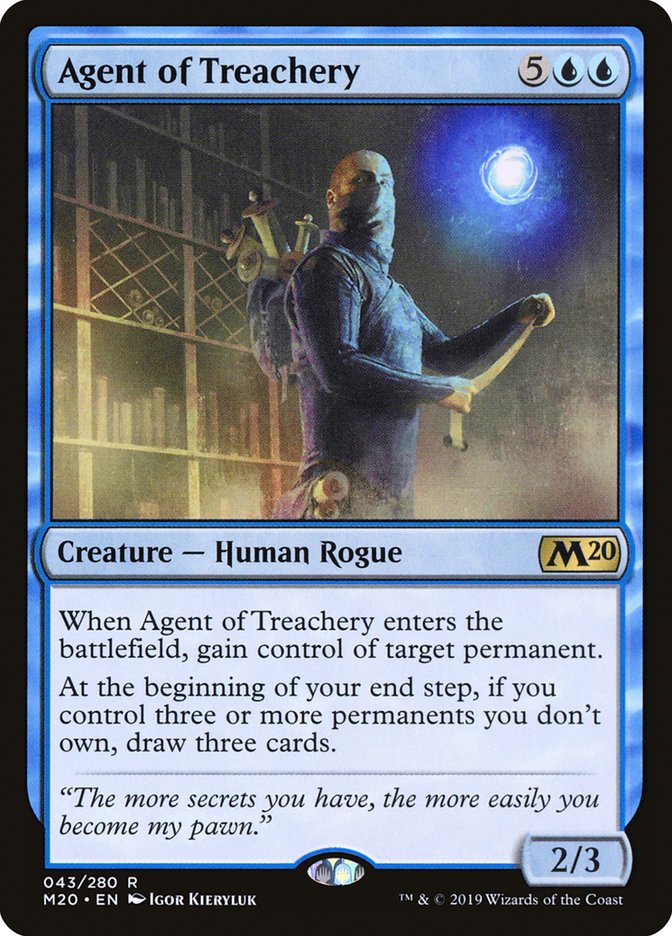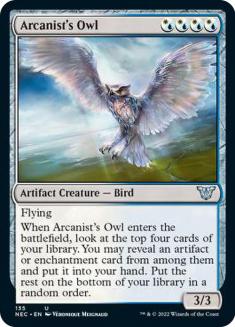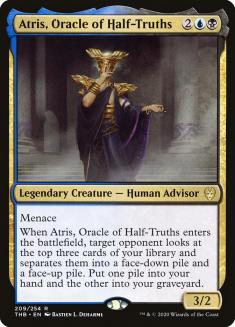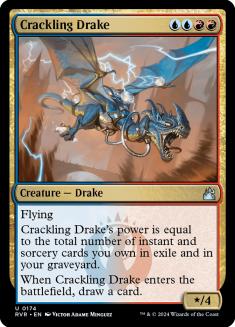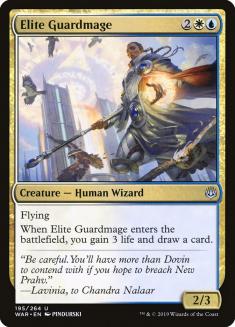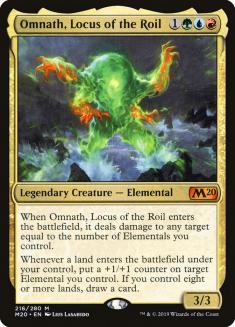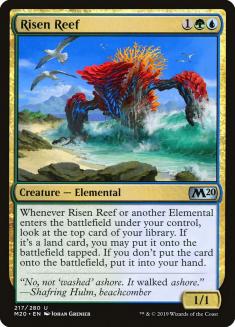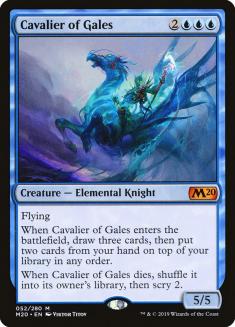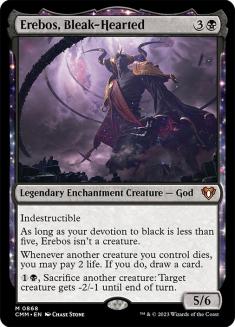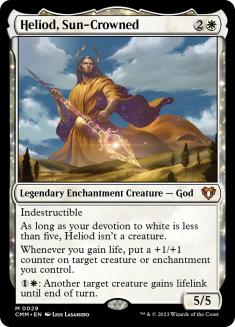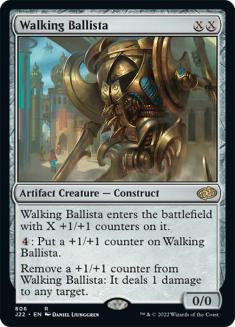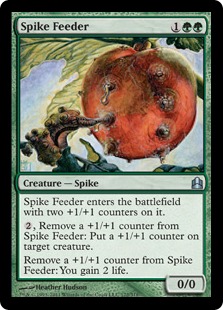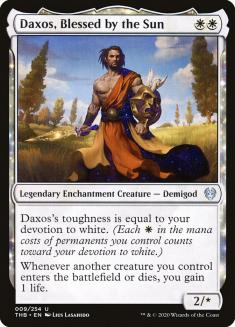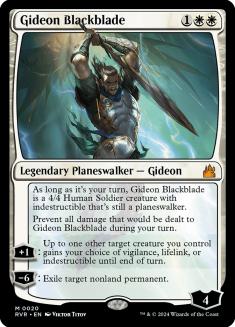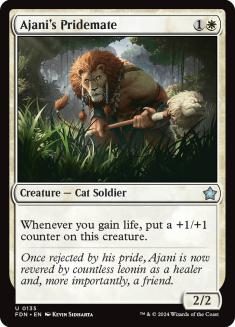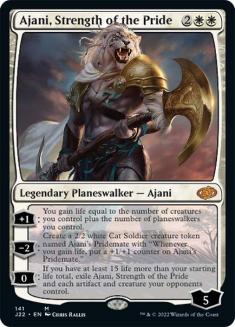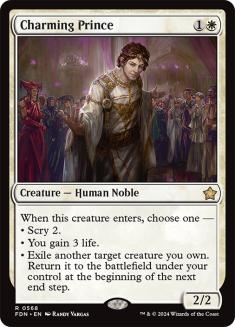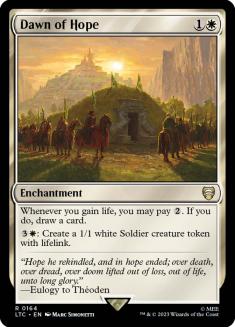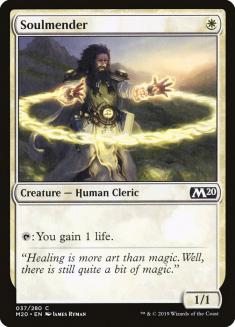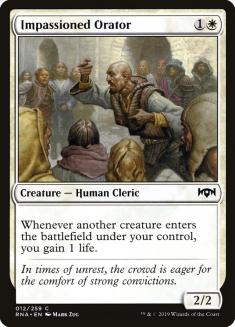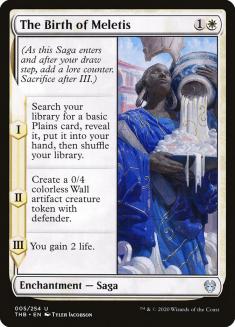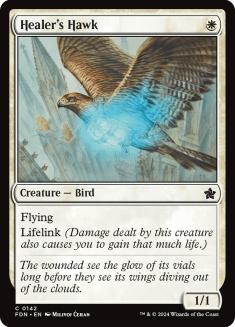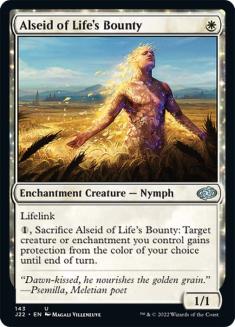When they were first released in Theros, the monocolored Gods shook up the format.
Now they’re here again, and it’s our job to try to make them work.
Up until now, we didn’t truly have a reason to play monocolored decks or to care about our colored symbols. This means it’s very hard to just slot a God into an existing deck; instead, the Gods will most likely create new decks that support them. Not all of these decks will be good, just like not all of them were in original Theros, but since they’re so different from what we previously had in the format, I think they are all worth a shot; we should always push to the maximum the new cards that have the potential to be broken, and all the Gods have that.
In today’s article, I’ll rank the Gods on how powerful I believe they are, and I will give you some decklists that illustrate their potential uses. Keep in mind that the lists are all very raw and merely intended as starting points.
5. Purphoros, Bronze-Blooded
At five mana, Purphoros is the most expensive monocolored God we’ve ever had, which makes him a hard card to justify on stats alone; yeah, 7/6 is big, but five mana is a lot for a card that has no immediate impact in a color that’s usually playing hasty Dragons at that point.
There are a lot of good red devotion cards in Standard, and there might be a red devotion deck, but I don’t think Purphoros is really a devotion card; you aren’t going to play him in a Mono-Red Aggro deck just because you can turn him on. My guess is that, if Purphoros sees play, it’ll be because it’s a Sneak Attack variant, and not because it animates into an indestructible creature. That said, even as a Sneak Attack variant, it’s very expensive. We’re used to paying five mana and winning the game with Emrakul, the Aeons Torn or Griselbrand, but with Purphoros it takes eight and you don’t automatically win.
The most exciting application of Purphoros, Bronze-Blooded to me is alongside Fires of Invention. If you play a Turn 4 Fires, you can follow it up with a Turn 5 Purphoros and then immediately activate it. If you cast Cavalier of Flame in the same turn, that immediately turns Purphoros on.
That said, I don’t think it’s good enough in a normal Jeskai Fires deck. Kenrith, the Returned King and Cavalier of Gales already fit the role of “big creature” and you’re not gaining much by just getting Purphoros on the battlefield, since both the Cavalier and the Kenrith can already give haste. Instead, I think it’s better to look towards a direction that maximizes Purphoros’s ability even more, with creatures like Drakuseth, Maw of Flames.
Here’s a sketch:
Creatures (30)
- 1 Ilharg, the Raze-Boar
- 4 Cavalier of Flame
- 4 Marauding Raptor
- 3 Drakuseth, Maw of Flames
- 4 Bonecrusher Giant
- 3 Ox of Agonas
- 4 Purphoros, Bronze-Blooded
- 3 Tectonic Giant
- 4 Anax, Hardened in the Forge
Lands (9)
Spells (21)

This deck is probably worse than normal Fires, but there might be something to it. You also don’t have to be Mono-Red; it’s easy to splash a secondary color, especially in a Fires deck, so something like Deafening Clarion or even Kenrith, the Returned King could be a consideration in a different build.
4. Nylea, Keen-Eyed
As an individual card, Nylea, Keen-Eyed is not the strongest. The mana discount ability is obviously good, but awkward in a four-drop and even more awkward in a four-drop that expects you to play several green mana symbols on your creatures. Many of the creatures you want to play with Nylea, Keen-Eyed, like Barkhide Troll; Syr Faren, the Hengehammer; and Yorvo, Lord of Garenbrig do not benefit from the discount.
The activated ability is probably better than it looks. Even the most creature-heavy decks are unlikely to draw a card over half the time, but, unlike previous instances of similar abilities, you can choose to keep this card or not, so if you hit a land you can bin it but if you hit a spell you want you can keep it on top. If you have Nylea on the battlefield and a lot of mana, but not enough creatures to turn on devotion, then it’s a reasonable mana sink. Even then, it doesn’t justify playing the card.
If Nylea, Keen-Eyed sees play, it will be because the support cast around it is very strong. All the aforementioned creatures are playable, and you even get a triple-devotion planeswalker in Vivien, Arkbow Ranger. It seems very easy to turn on devotion to green, and at that point Nylea is a four-mana, five-power indestructible creature with two random abilities that might come in handy. Most of the Gods in Theros Beyond Death have abilities that shape how you should build your deck, but for Nylea it really is going to be all about turning her on and attacking for five. It really is a shame that she has so much toughness rather than power, given that it’s a bit of a wasted stat in an indestructible creature.
Here’s a potential build:
Creatures (29)
- 4 Pelt Collector
- 4 Barkhide Troll
- 4 Voracious Hydra
- 4 Lovestruck Beast
- 4 Questing Beast
- 3 Yorvo, Lord of Garenbrig
- 3 Syr Faren, the Hengehammer
- 3 Nylea, Keen-Eyed
Planeswalkers (4)
Lands (2)
Spells (25)

3. Thassa, Deep-Dwelling
Thassa, God of the Sea was the best of the original Theros Gods; not only was she the best on power level, she also had the best support cast, and she remained a heavily played card for most of the time she was Standard-legal. Thassa, Deep-Dwelling is a very different card.
Thassa, God of the Sea was a card you could just throw in a mono-blue deck; the scry ability was always going to be relevant and a 5/5 potentially unblockable creature for three mana was always going to be a good rate. With Thassa, Deep-Dwelling, you’re getting a much worse rate on your creature and an ability that is completely contextual. If you don’t have the right cards on the battlefield, Thassa, Deep-Dwelling does nothing.
To me, this means that you can’t just have a Mono-Blue Devotion deck; you need to have a Thassa, Deep-Dwelling deck, and she will be played more for her ability than for her body. It wouldn’t shock me if there’s a deck that wants Thassa, Deep-Dwelling with no intention of ever turning her into a creature. In comparison, as a point of reference, I believe that, had Thassa, Deep-Dwelling been legal in Standard by the time Autumn Burchett won Mythic Championship I with Mono-Blue Aggro, it still wouldn’t have been played in that deck, even though it more than satisfied the devotion requirements with double- and triple-blue cards.
So, what are the cards that work well with Thassa, Deep-Dwelling?
Of course, this list is not comprehensive, as I selected the most appealing blue cards in the format to get repeated triggers from, but any creature with an enters-the-battlefield trigger will do, regardless of color.
Of those, the best way to achieve devotion to blue is Arcanist’s Owl. It turns Thassa, Deep-Dwelling on by itself, it helps you find Thassa, and then it’s a very good card to blink. The issue is that there aren’t many other enchantments you want to find, and artifacts don’t turn on devotion for the most part, but perhaps there’s something we can do with the blue artifacts. Here’s a sketch that has seventeen hits, which gives you around 82% chance to find an artifact or enchantment with the Owl:
Creatures (23)
- 2 Fblthp, the Lost
- 4 Arcanist's Owl
- 3 Hypnotic Sprite
- 4 Brazen Borrower
- 4 Thassa, Deep-Dwelling
- 3 Callaphe, Beloved of the Sea
- 3 Thassa's Oracle
Lands (3)
Spells (34)

Some of the cards here are a reach, but I tried to incorporate a lot of different artifacts and enchantments that provided devotion and then it should be easy to adjust the numbers after playing a little. I think Silent Submersible could actually be good in the right metagame, as it’s an artifact you can search for, it adds double devotion, and you can use Thassa to crew it (as well as cards like Fblthp).
This deck right now is extremely good at getting a high devotion to blue, but is a bit lacking on payoffs. Calaphe, Beloved of the Sea is a good payoff that you can search for, but it would be great if we got a big card like Gray Merchant of Asphodel or Master of Waves that really rewarded you for going all-in. Right now, the best we have is probably Thassa’s Oracle, which does double duty as a devotion enabler and payoff as well as potentially a finisher in the super late stages of the game.
Another possible build is to focus on the passive ability of Thassa in an Elementals deck. A lot of Elementals have powerful enters-the-battlefield triggers, and the deck naturally generates a lot of mana, which means you can use the activated ability on Thassa to good effect if you have nothing else to do. This deck will not be focused on turning Thassa on.
There’s also a potential Pioneer deck using Risen Reef, Master of Waves, and Thassa, Deep-Dwelling. Master of Waves in particular is great with Thassa, as you can blink the Master and not lose any tokens due to how state-based effects work.
Another interesting interaction with Thassa, Deep-Dwelling is that the creature comes back under your control. This is different from almost any Flicker effect in the past, which would return the card to its owner’s control. This means that, if you steal something (with, say, Claim the Firstborn or Act of Treason), and then you use Thassa’s ability on it, you get to keep it forever. I’m not sure how this deck should be built but it seems like there’s enough of a critical mass of Threaten effects for it to work.
2. Erebos, Bleak-Hearted
Erebos, Bleak-Hearted is an intriguing card. Right now, there seems to be enough in the space of “play small creatures and sacrifice them” that Erebos, as both a payoff and an enabler, has to be good somewhere; there’s just too much synergy on all sides. The -2/-1 ability is probably better than it looks as well, and just the threat of activating it should make combat a nightmare. In fact, I’m surprised the ability isn’t restricted to sorcery speed.
Erebos is the kind of card that you’ll almost never play without context (even if you have all black symbols, you’re not going to run it if you’re not interested in the abilities), but, unlike Thassa, Deep-Dwelling, most of the contexts you’d play him in happen to turn him on. As a result, it’s also going to work as a defensive card and a finisher.
Two life per creature dying is a steep cost in some matchups, but there’s currently a plethora of lifegain in black decks (particularly Gray Merchant of Asphodel), and, unlike previous effects of a similar nature, this one is optional, so if you’re under pressure you don’t have to use it.
Since I wrote about Gray Merchant of Asphodel last week, a couple of new cards have been previewed. Here’s one potential way to build an Erebos, Bleak-Hearted deck:
Creatures (30)
- 4 Gray Merchant of Asphodel
- 2 Midnight Reaper
- 4 Gutterbones
- 4 Knight of the Ebon Legion
- 3 Rankle, Master of Pranks
- 4 Murderous Rider
- 3 Ayara, First of Locthwain
- 2 Woe Strider
- 2 Erebos, Bleak-Hearted
- 2 Tymaret, Chosen from Death
Lands (26)
Spells (4)

It’s also possible to play a version with Cauldron Familiar and Witch’s Oven that would be less aggressive and more grindy.
1. Heliod, Sun-Crowned
I think Heliod, Sun-Crowned is far and away the best of the new Gods for two main reasons. The first is that it’s part of several infinite combos: Heliod, Sun-Crowned + Walking Ballista is infinite damage, and Heliod, Sun-Crowned + Spike Feeder is infinite life.
This means Heliod has applications in both Pioneer and Modern. Ben Friedman covered the Pioneer applications already, but here’s a potential Modern list:
Creatures (24)
- 4 Spike Feeder
- 2 Soul Warden
- 1 Auriok Champion
- 4 Noble Hierarch
- 2 Scavenging Ooze
- 4 Walking Ballista
- 1 Knight of Autumn
- 2 Ranger-Captain of Eos
- 4 Heliod, Sun-Crowned
Lands (17)
Spells (19)

Collected Company is an all-star here, as it can find both Spike Feeder and Heliod, Sun-Crowned. This combo is slower than the Devoted Druid + Vizier of Remedies one, but it’s also much harder to disrupt, since you can combo immediately rather than having to wait a full turn and one of the pieces is indestructible. It’s also possible to go even further in the Soul Sisters direction, with Ajani’s Pridemate, potentially Serra Ascendant, and more copies of Soul Wardens.
Heliod isn’t the best just for his combo potential, however; I think Heliod has strong Standard applications on his own. As a three-mana 5/5, Heliod is the same size as Thassa, God of the Sea was in original Theros and his static ability is also very relevant, because there are an infinite ways of gaining life in Standard right now. Here are some cards that combo well with Heliod:
Linden, the Steadfast Queen in particular is a huge card with Heliod. It continuously pumps your creatures while turning Heliod on almost by herself. Similarly to blue, white also has access to Arcanist’s Owl to both find Heliod and turn it into a creature if it wants to.
Here’s a potential list:
Creatures (32)
- 4 Ajani's Pridemate
- 4 Healer's Hawk
- 2 Tomik, Distinguished Advokist
- 3 Arcanist's Owl
- 4 Giant Killer
- 4 Linden, the Steadfast Queen
- 4 Daxos, Blessed by the Sun
- 4 Heliod, Sun-Crowned
- 3 Alseid of Life's Bounty
Planeswalkers (2)
Lands (2)
Spells (24)

There are, of course, many different ways to build these decks — we haven’t even seen the full set yet, so there might be more devotion enablers and payoffs coming our way — but hopefully these lists have inspired you to try out the new Gods to see which of them truly have potential.

